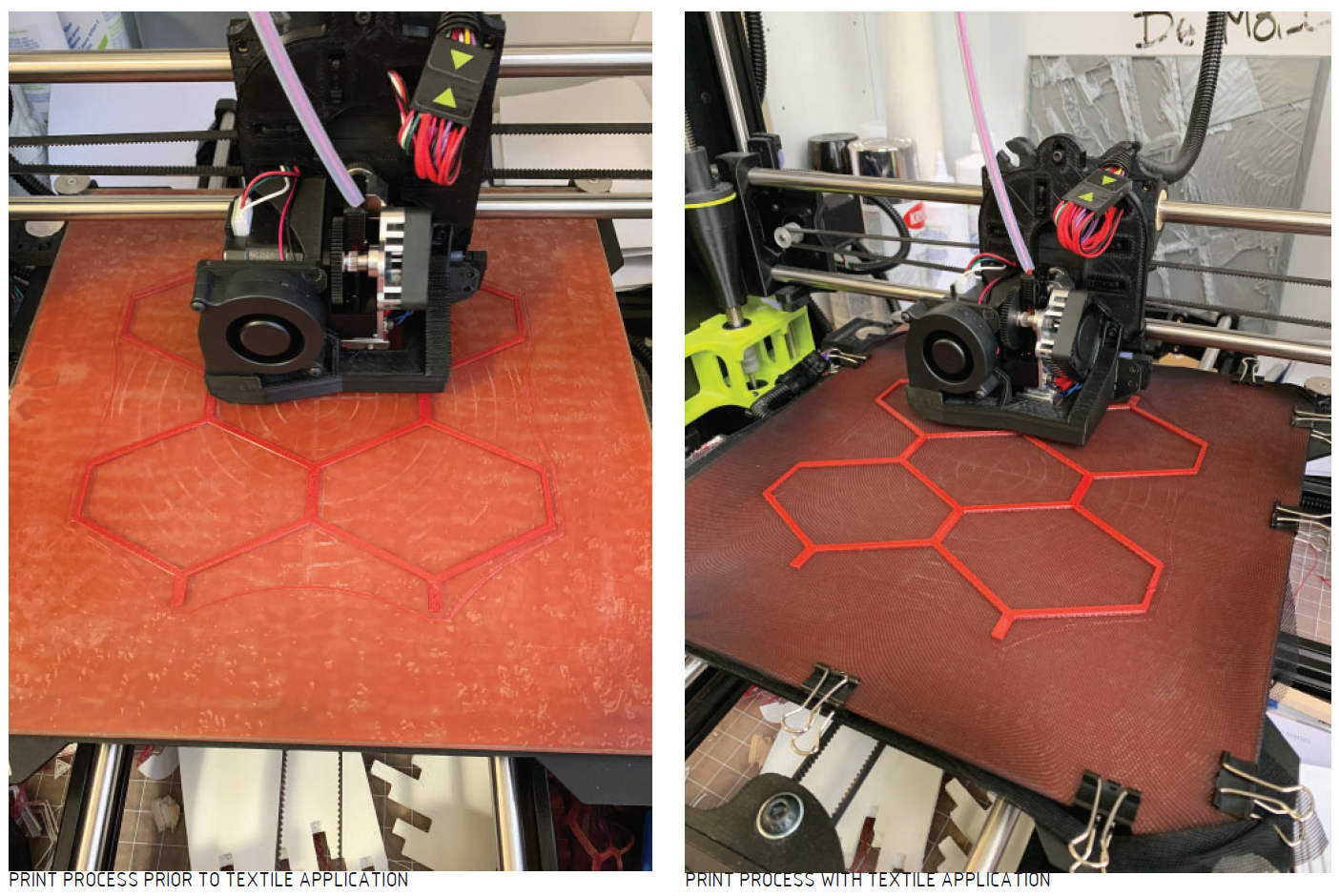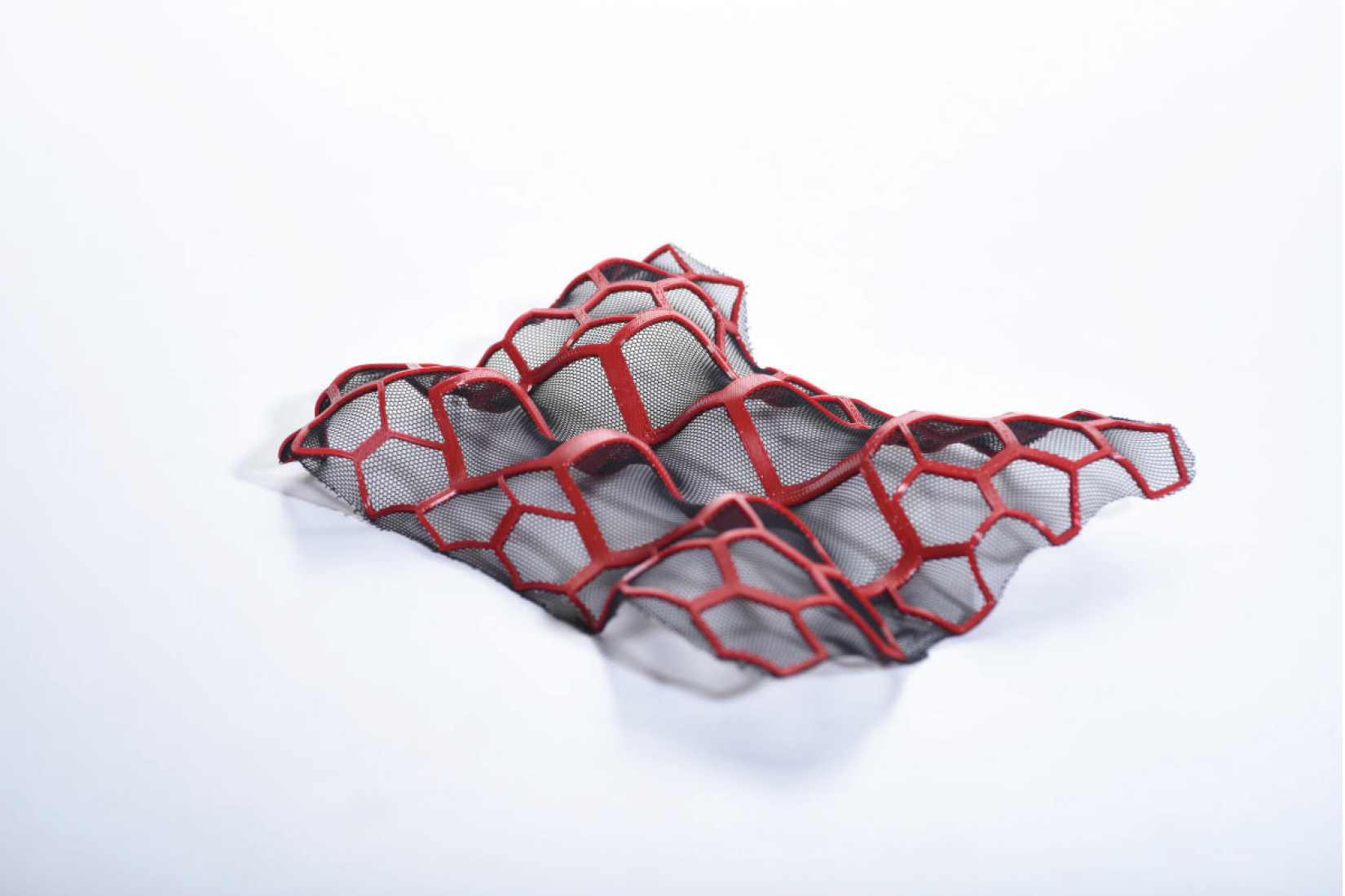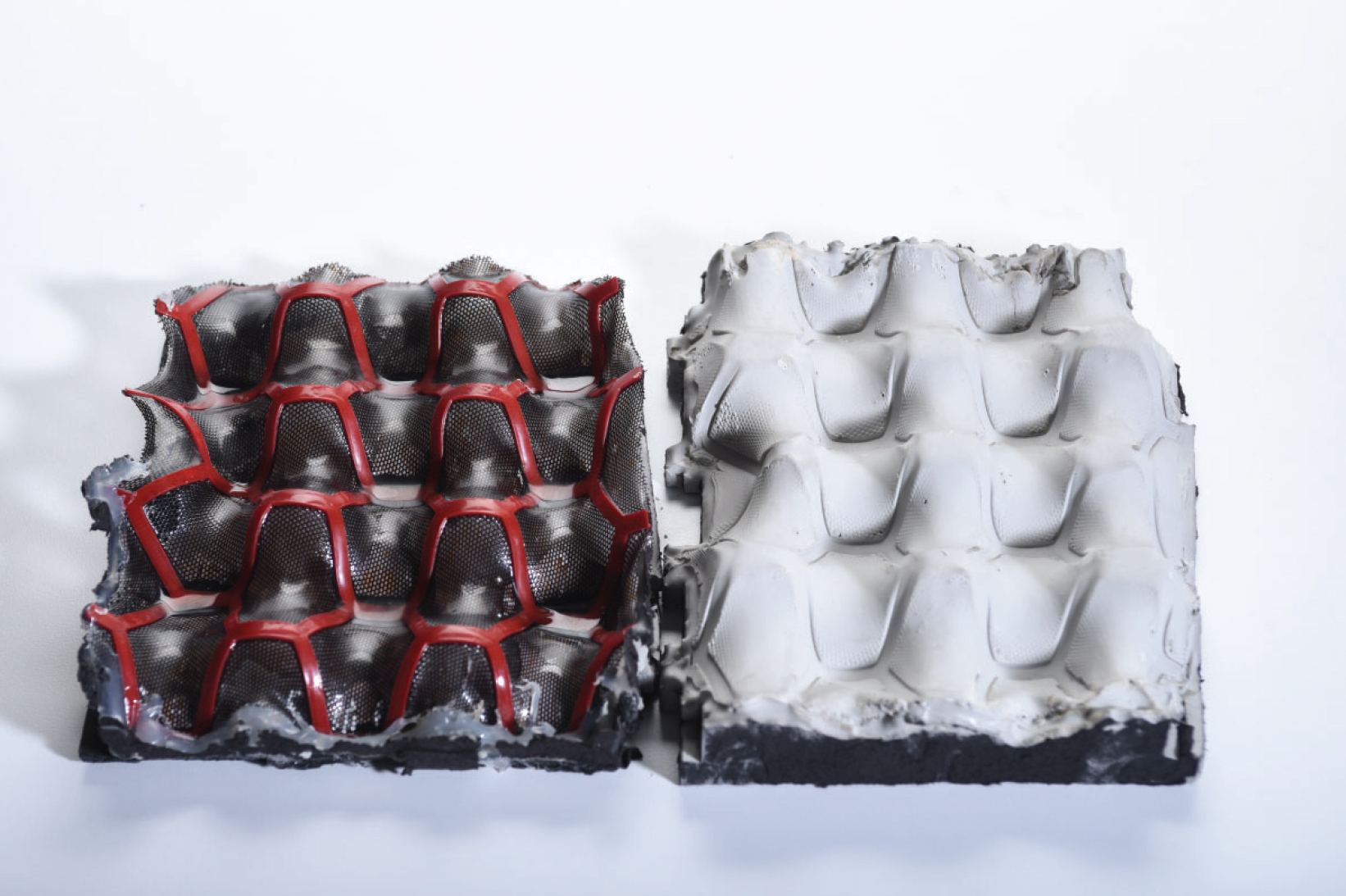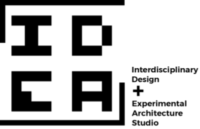Bending Active 3D Printing on Textiles
Sawyer DeMoll
The integration of 3d printing and textiles to create structured adaptive surfaces for a range of architectural applications. The additive process of applying a 3d printed structure to an elastic textile turns a fluid material into a soft structure that can be used for a variety of applications.
-complex formwork
-building facade
-roof skin
-shading screen
-environmentally activated skins
Through the process of 3d printing, in combination with inherent textile properties, it is possible to achieve accurate replication of forms created digitally. This process could be applied to solve a variety of architectural problems. In the instance of complex form-making for concrete work, this process is highly applicable. Using a computational process, a designed form can be deconstructed into a two dimensional pattern that can be applied to a stretched textile through a printing process. The material will retract when released from the print-bed and hold its intended shape due to the structure of the pattern printed onto it. This material can then be used as form-work for pouring. Using poly nylon mesh and ninja-flex TPU flexible filament, a flexible grid structure is applied to the textile to create a soft surface structure that can be stretched and stressed while still maintaining its structure.




The results demonstrated the realization of complex surfaces translated from digital space to physical space through the process of integrating 3d printing with a textile. This process shows potential as “a tool for fabrication” at different scales in architecture.



